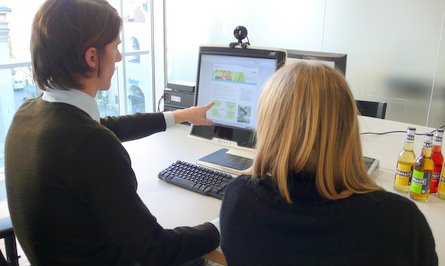Remote Usability Testing is a concept that allows you to perform a user research with participants in their natural environment with the help of screen-sharing software or remote usability vendor services. Unlike traditional usability testing methods, it gives the freedom to the user and researcher to be at different places while the testing is completed.
It is a great tool which answers the question on how to check the usability of the website by allowing researchers to watch the user interaction and behavior at various locations.
There are several advantages of remote usability testing, some of which are discussed below:
- Saves cost and time:
One of the definite advantages of this process is time and cost saving. There’s no need to figure out the logistics of hiring a professional lab or to have someone travel to the location of testing within strict timelines.
Users can interact with the researchers virtually and solve the issues real-time saving a lot of time, money and hassle for everyone. It is a surely less costly option than a traditional lab testing.
- Optimization of resources:
Through remote usability testing, it becomes possible to involve a number of participants for testing as compared to lab-based testing; to get more optimized results within less time.
- Flexibility:
The option of remote user flexibility provides a lot of flexibility as it does not require users to a particular place for getting the testing done. It allows the participants to do the test in the natural environment and also let the researchers work in a more conducive environment for analyzing true behavior.
- Accuracy in testing:
Researchers get much more accurate results in remote usability testing as compared to lab-based testing. This is due to the fact that the users are more comfortable and familiar with the setup, thus allowing the researcher to do the accurate testing.
- Geographical comfort:
One of the big benefits of the remote user flexibility is the geographical comfort it provides. Researchers and users can literally be at any location and still the testing can be done successfully by setting up web conferences and screen sharing option.
The target audience/participants can be geographically dispersed. Still, the testing and experiment can be performed without any difficulty.
- Higher numbers:
This option offers the ability to the researcher to test a number of participants at the same time, unlike the lab based testing where the number is limited. It definitely accommodates diverse groups of participants at a time.
- Real-time feedback:
Customers and users feel open to share the real-time feedback within the comfort of their natural home or work setting in remote usability testing.
- Quick results:
Getting the testing results within very short time is another advantage of remote user testing saving everybody’s time.
During a remote user testing, it is best to define the test and decide what tasks researcher is going to be asking participants to perform, their order and follow-ups on the session. Also, as a researcher, it is important to build in enough time in the test session to allow for solving any technology issues that might come up.
